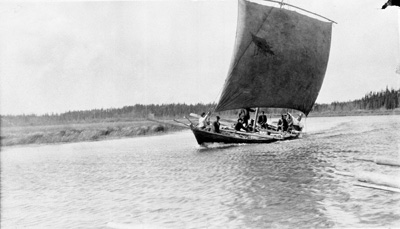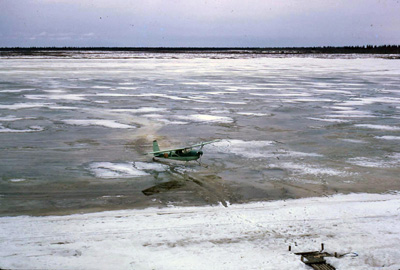From Scotland to Canada
Having signed his contract, a man's career with a fur trade company began with his journey from Scotland to Canada. Until the advent of cross-Atlantic flights in the mid-20th century, this journey would have been by boat. Until the later-19th century, ships would stop at the Orkney Islands for supplies and new recruits, and would then continue across the ocean, a voyage which would last several weeks. On their arrival in Canada, the men and supplies on the ships would be unloaded and then quickly re-loaded with furs so that they could leave Hudson Bay before the winter ice set in.
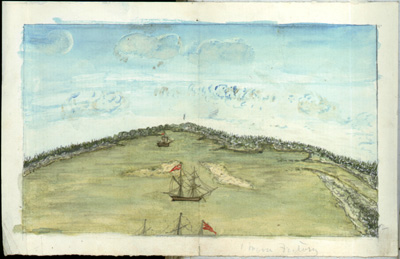
This view of the Moose River with Moose Factory in the distance was painted two years before John Clark arrived there in 1859.
© Toronto Public Library. Artist Samuel Smith (Acc. 954-4-36)
The new arrivals were transferred to their posts as soon as possible. Led by Aboriginal guides, they travelled across land and rivers by canoe or heavy wooden inland boats called York boats, dog team, and sometimes on foot. These journeys were mentally and physically demanding for the guides and especially for the new recruits, many of whom had no prior exposure to the climate and terrain, though Orcadians especially did have some experience of harsh environmental conditions. By the early 20th century, many new recruits from Scotland travelled to Canada on S.S Nascopie, the Hudson's Bay Company supply ship. Having crossed the Atlantic, S.S Nascopie called in at Hudson's Bay Company posts in the eastern Arctic, northern Quebec and Labrador, and then at Churchill or York Factory on Hudson Bay, to pick up and drop off passengers and goods.
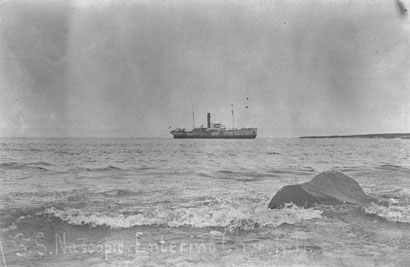
S.S Nascopie entering Churchill, c1913
© Hudson's Bay Company Archives, Provincial Archives of Manitoba. John Gregg. 1994/11/76.
By the 1960s, although fewer employees were engaged in Scotland, it was common for any new Hudson's Bay Company staff to fly across the Atlantic, though some preferred to travel by ocean liner.
Within the interior, transportation methods changed little until the late-19th century. Dog teams were commonly used for journeys between the posts and canoes and York boats were by far the most effective way to navigate the waterways of northern Manitoba and Ontario. The early 20th century brought some major shifts however. Float planes began to be used in the 1920s (though the Hudson's Bay Company did not buy its first plane till 1939), and in Manitoba the Hudson Bay Railway built new tracks linking northern settlements and providing a new means of transporting people and freight from Winnipeg to Churchill.
By the mid-20th century, vehicles such as tractor trains and bombardiers, which were tracked vehicles designed for snow-covered ground, were frequently used in the north, shortening the journey length between Hudson's Bay Company posts. Boats and canoes with motors were used for recreational as well as work-related pursuits.
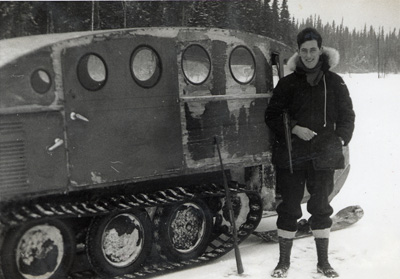
Snowmobiles were used for transporting lighter freight during winter. This photograph shows Angus Pelham Burn with a snowmobile manufactured by Bombardier Limited of Quebec.
© Courtesy of Angus Pelham Burn

